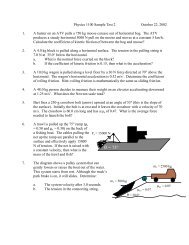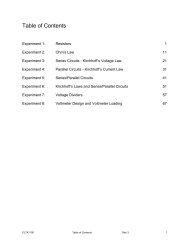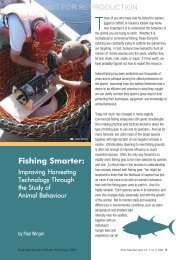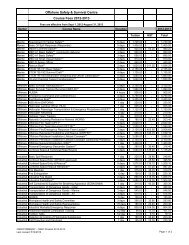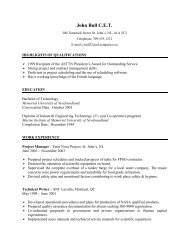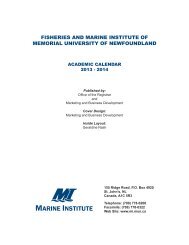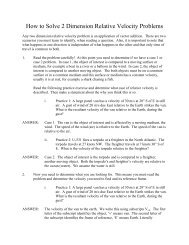Create successful ePaper yourself
Turn your PDF publications into a flip-book with our unique Google optimized e-Paper software.
Materials:Purpose:A force sensor, wooden blocks, surface board, mass set, MPLI and GraphicalAnalysis.To find a mathematical model that explains the relationship between weight,normal force, and friction, for all sliding objects.Procedure: We want you to examine the nature of sliding friction. To do this you will pull thewooden block along some surface with a calibrated force sensor. Each group will use adifferent surface combination. For all tests that you might do you must first devise a wayto knowingly measure the sliding friction force. Remember that the force sensor onlymeasures the force you supply to pull the object.When pulling the block, what type of motion should you strive for? Justify in terms of yourdynamic models? Draw a semi scale FBD and VCD.• Enter MPLI and open the file called “Friction.exp”. A F vs. t graph should now appear. Nextyou must calibrate the force sensor (see Appendix C). Make sure that when calibrating the forcesensor, it is arranged in the way it will be used.• In this experiment we will vary the normal force (by adding mass to the block) and recordboth the kinetic and static friction.• Where possible do several trials using different values of the normal force. Remember to pullthe block with constant velocity, starting from rest with no tension in the string.• Record all data in the table.→ calculate the normal force→ record the value of friction when the object was moving (kinetic) and the maximumvalue of friction before the object started to move (static) from the Force- time graph.Combined mass ofblock and attachedmass (kg)Normal Force (N) Static Friction (N) Kinetic Friction (N)- 34 -






